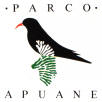|
|
||||
|
|
|
3rd Workshop of Italian Geoparks
"Regulatory Tools for the protection and enhancement of the geological heritage" Enna-Petralia Sottana (Italy), 16th-20th May 2011 |
||
|
|
||||
|
|
PHOTO CHRONICLE | |||
|
|
||||
|
|
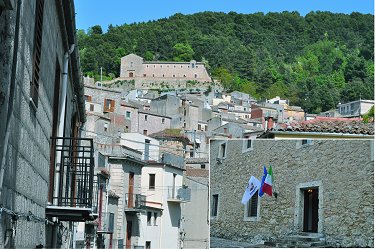 |
The village of Petralia Sottana, home of the Madonie Geopark (province of Palermo). In the background, the former Convent of the Reformers where the 3rd Workshop of Geoparks in Italy was held. At lower right the entrance of the former Convent who welcomed the participants in an environment of great suggestion. |
||
|
|
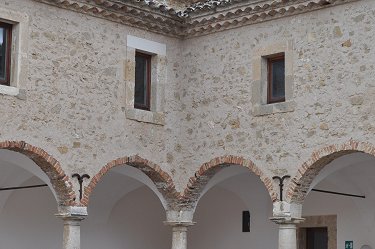 |
The cloister of the former Convent of the Reformers. The architectural complex, which was originally dedicated to St. Mary of the Angels, was built in 1655 and later expanded using materials (limestones and calcarenites) coming directly from the geological formations outcropping in the area. |
||
|
|
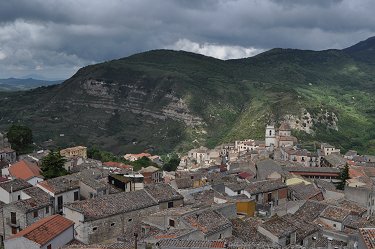 |
The landscape of Petralia Sottana from the former Convent of the Reformers. In the background the lower Messinian (6-7 million years ago) fossiliferous (especially corals and mollusc shells), limestones and calcarenites that characterize the geology of the Petralia Sottana area. |
||
|
|
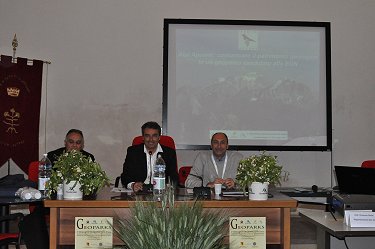 |
On the afternoon of Tuesday May 17, it was presented the contribution of the Park of the Apuan Alps, the only one Italian applicant for the European Geoparks Network in 2011. After an introduction on the organization and experiences of the Park by the President Giuseppe Nardini (at center in the photo) and a comment on the value of the geological heritage and on the following images by Giuseppe Ottria (right), a member of the Board of Directors, a movie from the documentary "Apuans: mountains of water" was screened. The documentary, whose director is Valter Torri for DocumentAria film, was made with the contribution of the Park of the Apuan Alps.On the left, Pasquale Li Puma, chairman of the session and organizer of the Workshop for the MadonieGeopark. |
||
|
|
 |
At the end of the thematic sessions and the closing of the congress, the 3rd Workshop of Geoparks in Italy continued with the guided escursion along the urban geological path of Petralia Sottana, implemented under the initiatives of the Madonie Geopark, which is an original and effective way to bring visitors to the geological history of the territory through the discovery of fossils, caves, monuments and popular legends related to the stone working. |
||
|
|
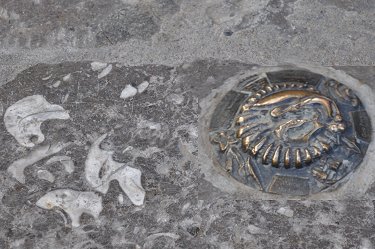 |
Along the urban geological path, the points of interest are marked by a bronze medal. In this case, grey fossiliferous limestones of Mesozoic age are visible in the pavement of the main street. These limestones are different from those of Petralia Sottana, and derived from the Santo Otiero quarry, a landscape site already sacralised before the Christianity. |
||
|
|
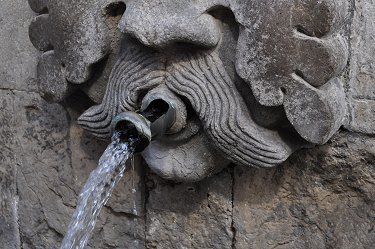 |
The 'U canali Fountain from which water flows channelled from one of the springs at the contact between the coral-bearing limestones and the clays, which are located in the village of Petralia Sottana. |
||
|
|
 |
The participants to the excursion along the urban geological path have finally reached the Chiesa Madre (the Mother Church) of Petralia Sottana, dedicated to Mary of the Assumption. |
||
|
|
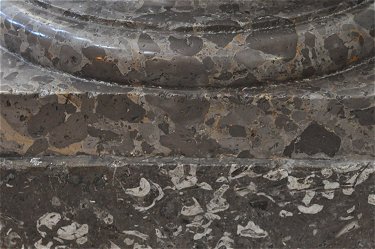 |
The Chiesa Madre itself represents a geological stop becouse, inside, are clearly visible, and marked, fossiliferous limestones of the Mesozoic used for the bases of the columns. |
||
|
|
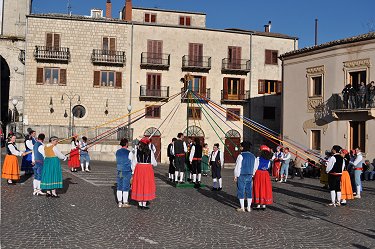 |
At the end of the day, for the participants in the 3rd Workshop of Geoparks in Italy, was exceptionally held the “Pantomima della Cordelia”, a traditional dance deeply rooted in the Madonie territory, a hymn of thanks to Nature and Providence. The Dance has ancient origins, even pre-Christian, carried out in thanksgiving to Ceres, goddess of the harvest, and later also a carnival dance and rite for weddings. |
||
|
|
 |
The Sicilian mission of the Apuan Alps Park representatives ended on May 19 with a visit to the Cerere Fortress. This old castle is the symbol of the namesake Geopark. |
||
|
|
||||
|
|
||||
|
|
||||
|
|
||||
